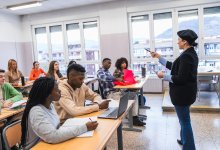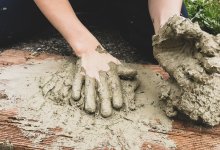Curriculum Planning
Looking for ways to develop dynamic, compelling, and standards-based course content and activities? This is the place to start.
Fresh Approaches to Instructional Design
An educator with 20-plus years of experience on crafting creative and energizing lessons.7.5kYour content has been saved!
Go to My Saved Content.Why Learning at Home Should Be More Self-Directed—and Less Structured
On March 18, 2020, Simone Kern tweeted that simply “recreating schools at home” passes up a golden opportunity to engage kids in authentic, self-directed learning.629.8kYour content has been saved!
Go to My Saved Content.6 Techniques for Building Reading Skills—in Any Subject
Students need good reading skills not just in English but in all classes. Here are some ways you can help them develop those skills.742.2kYour content has been saved!
Go to My Saved Content.What’s the Right Amount of Homework?
Decades of research show that homework has some benefits, especially for students in middle and high school—but there are risks to assigning too much.583.4kYour content has been saved!
Go to My Saved Content.5 Highly Effective Teaching Practices
We teachers are always looking to innovate, so, yes, it's essential that we try new things to add to our pedagogical bag of tricks. But it's important to focus on purpose and intentionality -- and not on quantity. So what really matters more than "always trying something new" is the reason behind why we do what we do.574.6kYour content has been saved!
Go to My Saved Content.60-Second Strategy: Framing the Lesson
When teachers make their teaching and learning goals clear to their class, every activity has a purpose and every student understands what they’re doing.Translating Standards Into Student-Friendly Terms
Designing an effective assessment requires first deconstructing the standards into clear criteria of success that students can understand.7.1kYour content has been saved!
Go to My Saved Content.Observing and Documenting an Emergent Curriculum in Preschool
Teachers can structure learning experiences by providing time and space for children to ask their own questions and make discoveries.2.6kYour content has been saved!
Go to My Saved Content.Designing Science Inquiry: Claim + Evidence + Reasoning = Explanation
The Claim, Evidence, Reasoning framework is a scaffolded way to teach the scientific method.599kYour content has been saved!
Go to My Saved Content.How to Plan When You Don’t Know What to Plan For
What school will look like in the fall is still uncertain for most of the U.S., but teachers can develop flexible plans that work for distance and in-class teaching.240.7kYour content has been saved!
Go to My Saved Content.What Is Your Educational Philosophy?
While lesson planning this summer, educators might also take time to reflect on their core beliefs about learning and teaching.444.7kYour content has been saved!
Go to My Saved Content.Kindness: A Lesson Plan
Classroom activities and resources for developing a vital character trait.347.4kYour content has been saved!
Go to My Saved Content.Using a Learning Map to Build Exemplary PBL Units
By developing—and revisiting—an instructional roadmap that connects standards, activities, and skill development, these teachers put students on a path toward mastery.8 Questions New Teachers Often Ask—Answered
An education professor and former teacher tackles issues like classroom management, projecting authority, dealing with parents, cell phone distractions, and more.The Benefits of a High School Psychology Class
Students gain not just social and emotional learning skills but academic ones like how to conduct and analyze research.213.7kYour content has been saved!
Go to My Saved Content.













